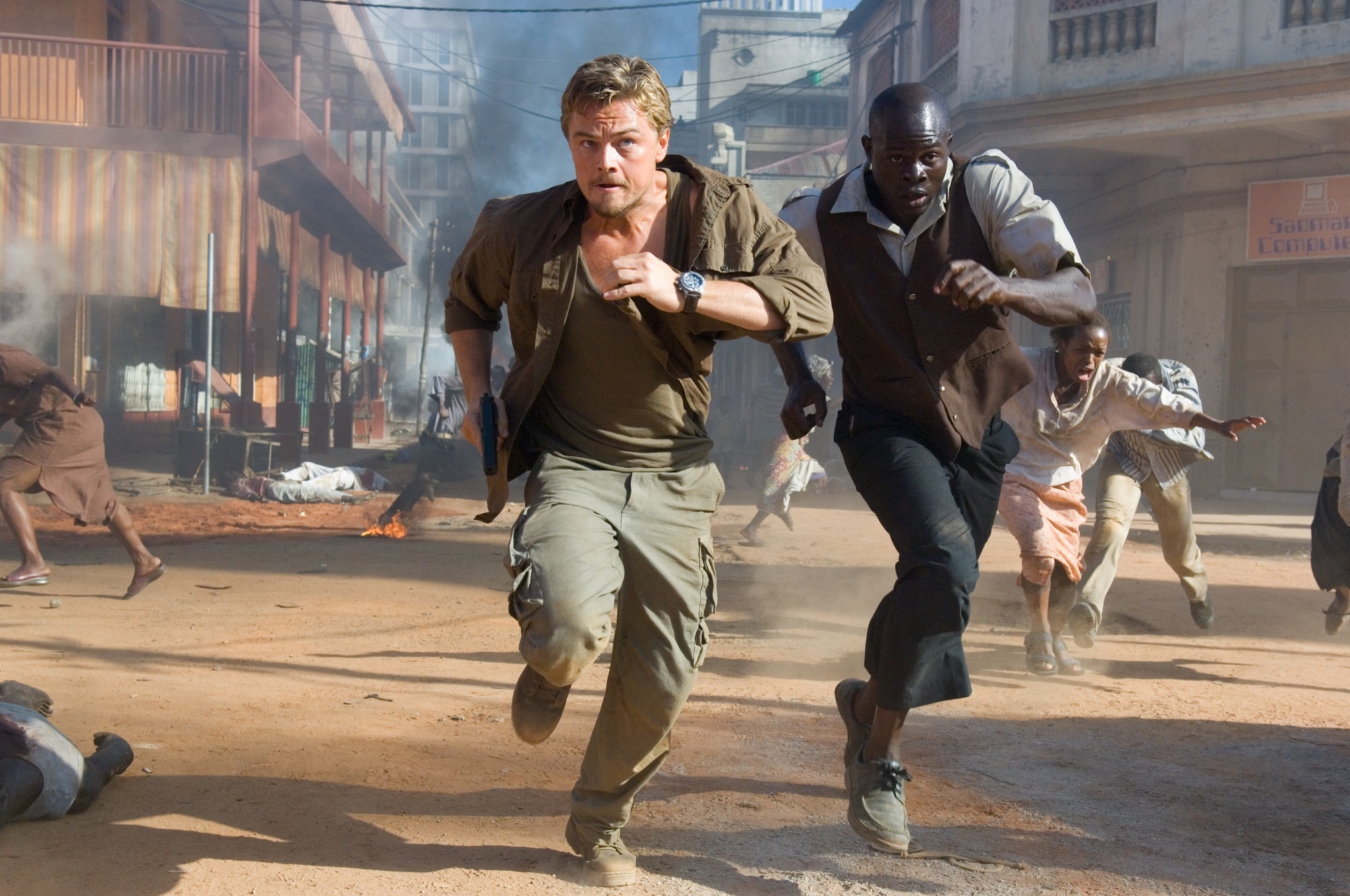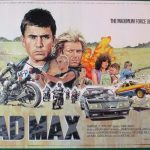Blood Diamond (2006)

“Blood Diamond,” directed by Edward Zwick and released in 2006, is a gripping drama that explores the complex and often harrowing world of conflict diamonds and their impact on global and local communities. Set against the backdrop of the Sierra Leone Civil War in the late 1990s, the film examines the intersections of greed, violence, and humanity through a narrative that is both compelling and deeply unsettling. Starring Leonardo DiCaprio, Djimon Hounsou, and Jennifer Connelly, “Blood Diamond” offers a powerful commentary on the human cost of the diamond trade and the moral choices faced by individuals entangled in its web.
The film follows the journey of Danny Archer (Leonardo DiCaprio), a South African mercenary and diamond smuggler; Solomon Vandy (Djimon Hounsou), a fisherman who becomes a diamond prospector; and Maddy Bowen (Jennifer Connelly), a journalist who seeks to expose the truth behind the conflict diamond trade. The plot is set against the brutal backdrop of the Sierra Leone Civil War, where armed factions control diamond-rich areas and use the profits to fuel their violent campaigns.
The narrative begins with Solomon Vandy’s capture by rebel forces, who force him to work in the diamond mines. During his captivity, Vandy discovers a rare pink diamond and hides it, hoping to use it to secure a better future for his family. Archer, seeking to profit from the conflict, learns about the hidden diamond and offers to help Vandy find it in exchange for a share of the bounty. Maddy Bowen, who is reporting on the conflict, becomes involved when she discovers the connection between Archer and the diamond trade. The three characters’ paths converge in a tense and morally complex journey as they navigate the treacherous terrain of war and the dark world of diamond smuggling.

“Blood Diamond” explores several key themes, including the ethics of the diamond trade, the impact of war on civilians, and the quest for redemption. The film delves into the concept of “conflict diamonds”—gemstones mined in war zones and sold to finance armed conflict. This theme is central to the film’s narrative and is represented through the characters’ personal struggles and moral dilemmas.
Danny Archer’s character is a study in moral ambiguity. As a mercenary, he is driven by personal gain and a desire to escape his past. His relationship with the diamond reveals his internal conflict and the possibility of redemption. Archer’s motivations are shaped by his own experiences and his quest for a better life, reflecting the broader impact of greed and violence on individuals.
Solomon Vandy’s character embodies resilience and the desire for family reunification. His determination to secure a future for his loved ones contrasts with the violence and exploitation surrounding him. Vandy’s journey highlights the human cost of conflict and the sacrifices made by those caught in the crossfire.

Maddy Bowen, as a journalist, represents the pursuit of truth and justice. Her role in exposing the horrors of the diamond trade underscores the importance of reporting and activism in confronting global issues. Bowen’s interactions with Archer and Vandy reveal her commitment to uncovering the truth, even when faced with personal danger.
“Blood Diamond” employs a gritty and realistic visual style to convey the harsh realities of the conflict. The film’s cinematography, led by Eduardo Serra, captures the raw and chaotic nature of the war-torn landscape, from the dangerous diamond mines to the ravaged villages. The use of handheld cameras and natural lighting enhances the film’s sense of immediacy and authenticity.
The film’s action sequences and depictions of violence are intense and unflinching, reflecting the brutal conditions of the conflict. The visual style serves to immerse the audience in the setting and underscore the film’s themes of suffering and exploitation.
The musical score for “Blood Diamond,” composed by James Newton Howard, complements the film’s emotional and dramatic elements. The score incorporates traditional African instruments and rhythms, enhancing the authenticity of the setting and contributing to the film’s atmosphere. The music underscores key moments of tension and poignancy, reinforcing the narrative’s impact and emotional resonance.

“Blood Diamond” received mixed to positive reviews from critics, with praise directed at the performances of the lead actors and the film’s ability to raise awareness about the issue of conflict diamonds. Leonardo DiCaprio’s portrayal of Danny Archer was particularly noted for its depth and complexity. The film’s exploration of the diamond trade sparked discussions about the ethics of consumerism and the role of the jewelry industry in perpetuating conflict.
Despite some criticisms regarding its portrayal of the conflict and its dramatic liberties, “Blood Diamond” succeeded in drawing attention to an important global issue. The film contributed to broader conversations about ethical sourcing and corporate responsibility in the diamond industry.
“Blood Diamond” (2006) stands as a powerful and thought-provoking film that addresses the human cost of the diamond trade and the moral complexities of war. Through its compelling narrative, strong performances, and realistic portrayal of conflict, the film provides an insightful examination of greed, violence, and redemption. Directed by Edward Zwick, “Blood Diamond” serves as both a dramatic adventure and a poignant reminder of the broader implications of consumer choices in a globalized world. Its impact extends beyond entertainment, encouraging viewers to consider the ethical dimensions of their actions and the consequences of global commerce.











